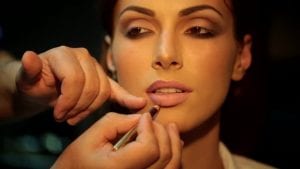 Beauty in the eye of the beholder, they say. Then, American talk show host, Ellen DeGeneres said, “Beauty is being comfortable in your own skin.” Beauty expert Linden Tyler gives focus to this trend of thought when she said, “Invest in your skin. It is going to represent you for a very long time.”
Beauty in the eye of the beholder, they say. Then, American talk show host, Ellen DeGeneres said, “Beauty is being comfortable in your own skin.” Beauty expert Linden Tyler gives focus to this trend of thought when she said, “Invest in your skin. It is going to represent you for a very long time.”
Indeed, beauty and skin care seem to have been around since time immemorial. But really, that is not so, according to Canadian educator Carla Rice’s book, Becoming Women. Until the late-19th century, mirrors were precious possessions, as valuable as luxury cars. Only the really rich could afford to own a mirror then. American history professor Kathy Peiss, in her book Hope in a Jar, writes that the glass in mirrors before the late-19th century, was so uneven, that people’s appearance was dramatically altered from one mirror to the next.
Even though women, in general, were unable to look at their own image, by the early 19th century, hand-colored drawings of women’s fashion were included in American fashion magazines such as Records of Fashion. In the 1860s, with photography becoming accessible to regular people, there arose a general desire to look good. With photography, came a spiraling surge of mass media, and images of beautiful young American women were getting splashed on glossy magazine covers. At this time, American graphic artist. Charles Dana Gibson, personified the ideal American beauty through the tantalizing and delicately dignified Gibson Girl. The Gibson Girl set on fire the American female desire for the ideal in beauty. Wall paper and chinaware to colorful scarves, the Gibson Girl was the most sought after design. Since the 1920s, women have been pursued and courted by a thriving advertising industry. Youth and flawless beauty were portrayed as timeless and achievable to all. The fact that the photographs were artistically touched up was overlooked. Women and men alike were hooked on what they thought beauty products could do.
The elusive search for ideal beauty spilled into the field of medicine too, in the form of aesthetic or cosmetic medicine. The US stands at the forefront of this race, with the highest number of plastic surgeries performed annually. According to the American Society for Aesthetic Plastic Surgery, in 2013 alone, 11.5 million surgical and non-surgical cosmetic treatments took place in the US, costing over $12 billion. Over 90% of the treatments were for women. The annual Global Aesthetic Survey of 2016 conducted by the International Society of Aesthetic Plastic Surgeons (ISAPS) revealed that cosmetic procedures increased by 9% globally, with the top five countries ranked as the US, Brazil, Japan, Italy and Mexico. The world’s largest market research store, Research and Markets, estimates that the global cosmetic surgical industry is around $20 billion and will increase to $27 billion by 2019. ISAPS President, Renato Saltz, said, “We are in 103 countries, but all we can do as responsible leaders, is make sure the training is adequate and that the accreditation process is as strong as possible and pray and hope the consumer does their homework before selecting surgeons.”
Obstetrician and gynecologist in Brooklyn New York, Dr. Ngozi Nwankpa- Keshinro, who chose to become a cosmetic surgeon, said, “The two fields are as alike as an apple and an orange,” Dr. Nwankpa-Keshinro said. “One can be lifesaving, while the other is not. But when you clear up someone’s acne or facial hair, they are as grateful as if you delivered their baby.”
In an age of digital technology, the beauty care industry is also being rigorously scrutinized on the Internet. Consumers today are more aware of what goes into their treatment and are also concerned about the impact of their products on the environment and society. Consumers meticulously research the ingredients in the products they use, and make their choices to support a sustainable environment, like the AGNES Acne Treatment. Dr Siew Tuck Wah, Medical Director and founder of Radium Medical Aesthetics, which offers the acne treatment, says, “”AGNES Acne Treatment remains one of the very few permanent acne solutions offered by doctors. Designed by Korean medical scientists, AGNES leverages on focused radiofrequency waves. Using a micro-insulated needle, the radiofrequency energy is delivered deep into the offending sebaceous glands, destroying them. Sebum is no longer secreted by the glands – and acne is cured, permanently.”
Andrea CEO of the US marketing organization, Women’s Marketing, says about facial skincare and the broader personal care products, ““Women are overwhelmed with choices. They are exposed to more than 5,000 brand messages every day.”
As people sift through the products trying to identify what would suit them best, most are not seeking to become the ideal beauty, but to look the best they can with their given assets. Many seek the “rested, refreshed” look that dermatologists and surgeons alike recommend. Skin care and beauty treatment indeed require time and effort. Beauty expert, Karen Grant said, “Skin care is like dieting. You have to invest time and effort. There is no instant miracle cure.” French fashion designer, Coco Chanel, said, “Nature gives you the face you have at twenty; it is up to you to merit the face you have at fifty.”
Nothing worthwhile comes easy, even something as fleeting as youthful beauty that a flawless skin and complexion bring. American poet, Maya Angelou expresses it poetically, “We delight in the beauty of the butterfly, but rarely admit the changes it has gone through to achieve that beauty.”
If you would like to contribute an article or contact our contributors, you can get in touch here
